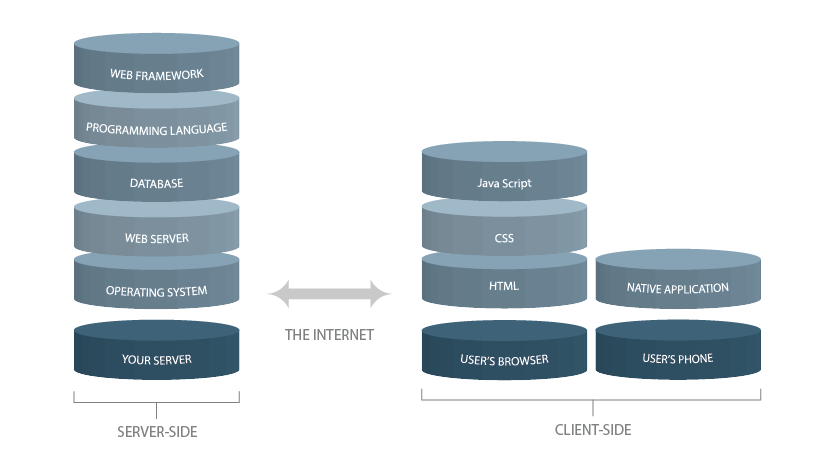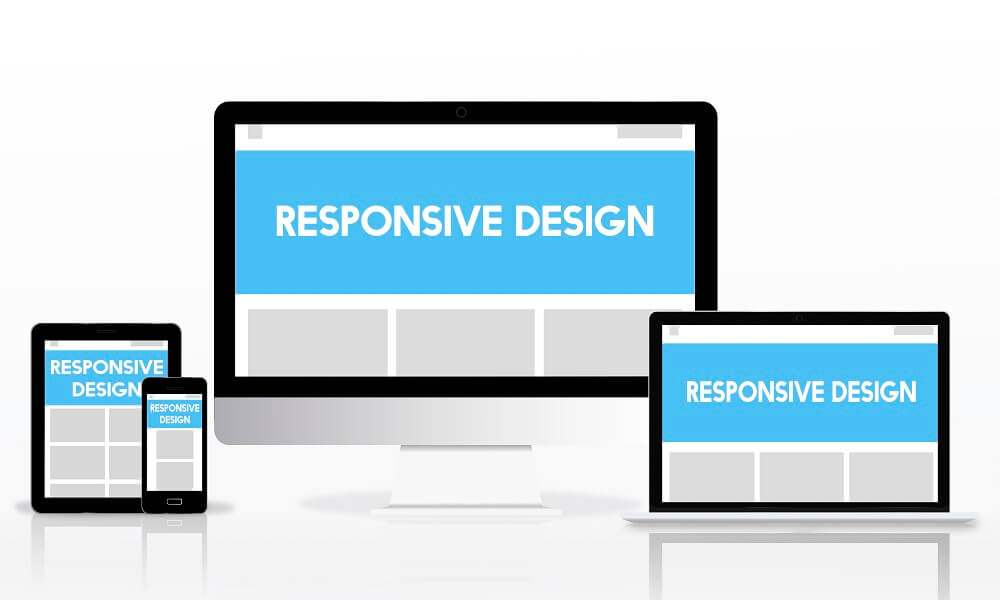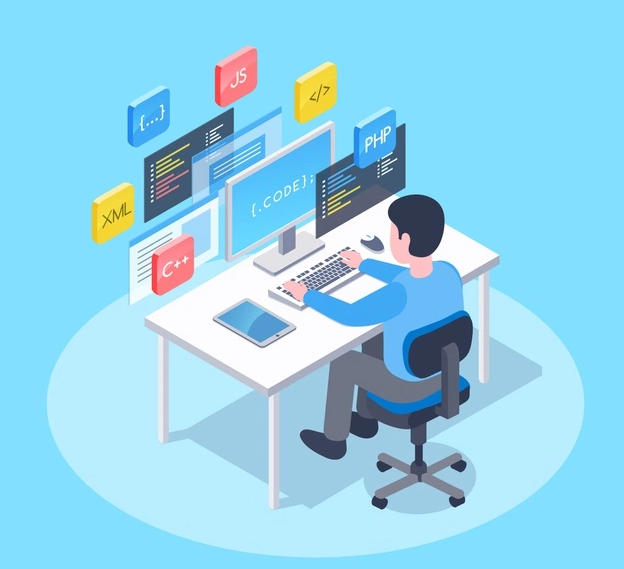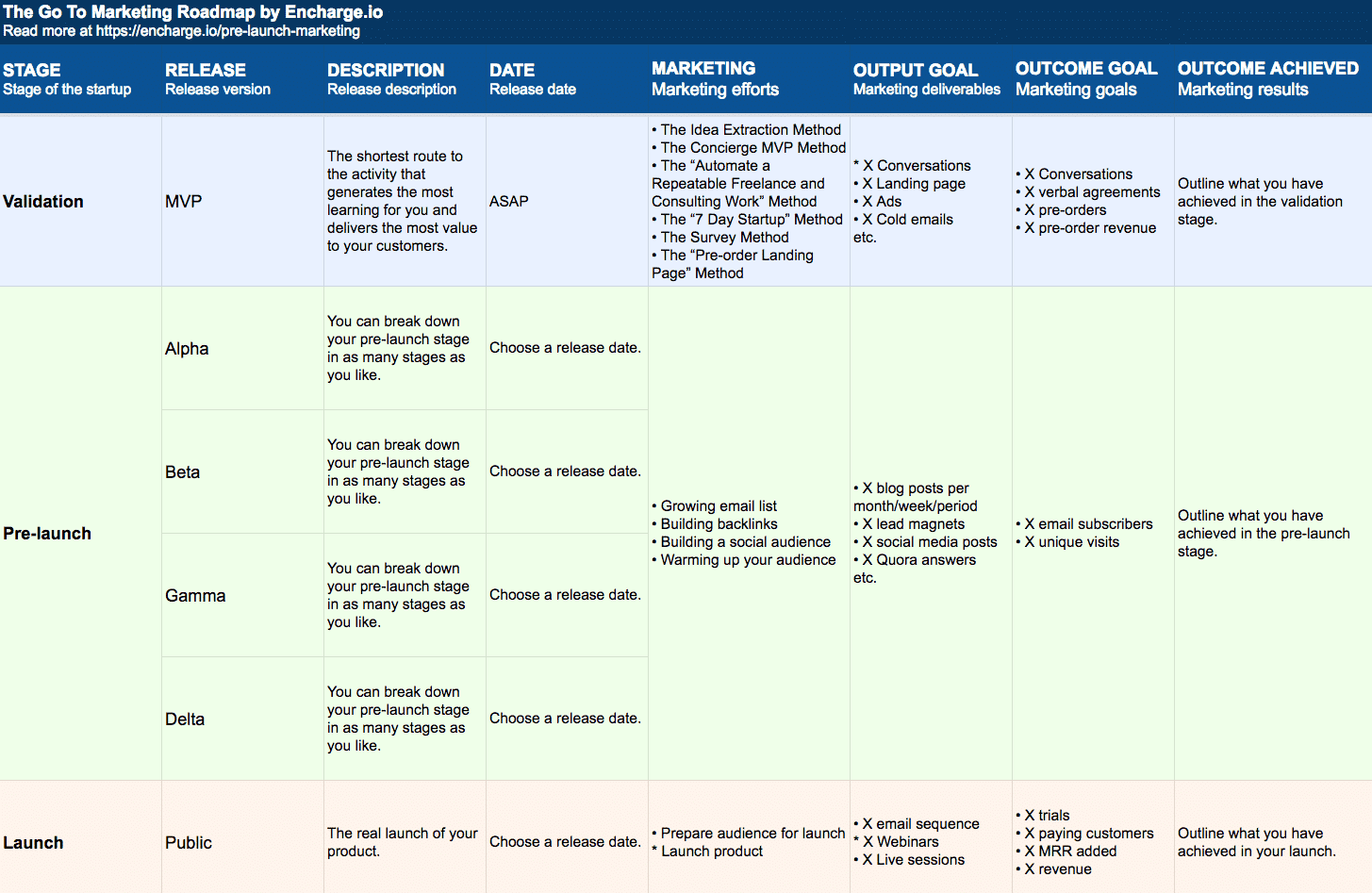“Software as a service” (SaaS) is becoming an increasingly viable choice for organizations looking for the accessibility and versatility of software solutions and online data analysis tools without the need to rely on installing and running applications on their own computer systems and data centers.
Gartner predicts that the service-based cloud application industry will be worth $143.7 billion by 2022, which is a level of growth that will shape SaaS trends in 2021.
SaaS is a software distribution model that offers a lot of agility and cost-effectiveness for companies, which is why it’s such a reliable option for numerous business models and industries.
It’s also popular amongst businesses for its simplicity and user accessibility, security, and the widespread connectivity that serves to streamline business models, resulting in maximum efficiency across the board. Today, most companies are in the process of implementing various business intelligence strategies, turning to SaaS BI tools to assist them in their efforts.
2019 was a breakthrough year for the SaaS world in many ways. With a new year on the horizon, in this article, we’ll explore 10 essential SaaS trends that will stand out in 2021. But, before we do that, we will discuss the general characteristics revolving around the industry that will help put additional light on the SaaS industry trends for 2021.
Before we dig any deeper into our top ten SaaS industry trends for 2021, let’s dispel some common myths surrounding the industry.
Never miss an update for us. Join 10,000+ marketers and leaders.
The Key Characteristics
Before we explore our essential software as a service trends for 2021, it’s important to consider what defines SaaS as not only a technological development, but as a working business model.
Flexible payment options: Businesses don’t have to go through the expense of purchasing software and hardware. Instead, they have the option of utilizing various pricing structures. Flexibility in payment models, where they only pay for the resource usage they need, for instance, is attractive for many organizations in today’s competitive world.
Scalability: Cloud-based SaaS enables businesses to expand with ease due to its inherent scalability. Companies can be selective about the types of features and options they want.
Updates: SaaS providers handle the necessary software updates and develop new features over time, so businesses don’t have to invest ample amounts of time in this particular area of operation.
Accessibility: With SaaS, businesses have the mobility of accessing applications from any digital device and location, making it especially convenient for mobile platforms. Additionally, it boasts ease-of-use and is user-friendly.
Increased collaboration: SaaS developments enhance a business’s ability to promote collaboration across teams and departments due to the facilitation of file sharing, in addition to a distinct ease of reading and understanding across systems.
Security: Most SaaS models are known for their enterprise-level security, which is a more holistic approach to security than many centralized, on-premise solutions. In Cloud SaaS, per-existing disaster recovery protocols are in place to manage potential system failures. This means that your business’s data is available and secure regardless of a data breach or system failure.
As businesses continue to rely on innovative data discovery tools and technologies to increase both their productivity and their efficiency, and as new software as a service trends continue to emerge, this young, groundbreaking industry can only go from strength to strength.
Even if figures diverge somewhat, the many forecasts conducted on SaaS industry trends 2021 demonstrate an obvious reality: the SaaS market is going to get bigger and bigger.
Indeed, according to Bloomberg, public cloud platforms, business services, and applications (SaaS) will all grow at a 9% CAGR (Compound Annual Growth Rate) between 2019 and 2023, and worth $60.36 billion. A Betterbuys report reveals that the specific expenditure in the U.S. SaaS Industry is forecasted to reach $55 billion by 2026.
And according to Gartner, the global public cloud service market is projected to grow significantly in 2021 and beyond.
“Customers won’t care about any particular technology unless it solves a particular problem in a superior way.” – Peter Thiel, co-founder of PayPal, one of the planet’s biggest SaaS providers
All signs indicate that this coming year is going to be an interesting, trendsetting year for the trends in SaaS industry. Of all the developments currently in the pipeline, these 10 SaaS industry trends, in particular, are showing signs of standing out as the most significant in 2021:
1. Artificial Intelligence
The first of our most impactful trends in SaaS is of the autonomous, self-learning variety.
Today, Artificial Intelligence is all over the place – it made the top 3 of our list of our business intelligence trends for 2021 – and next year, it’s expected to make some serious waves. Artificial Intelligence (AI) technologies are becoming more widespread; it’s becoming a game-changer worth $15.7 trillion.
AI optimizes business processes, increasing productivity and efficiency while automating repetitive tasks and supporting human capabilities.
Within business scenarios, artificial intelligence (as well as machine learning, in many cases) provides an advanced degree of responsiveness and interaction between businesses, customers, and technology, driving AI-based SaaS trends 2021 onto a new level. There are numerous features developed by modern software providers based on artificial intelligence such as data alerts.
With an AI algorithm using the most advanced neural network for anomaly detection, and a machine-learning algorithm for pattern recognition, these data alerts learn from trends and patterns and let you know as soon as something important happens.
That way, when a pre-set goal is met, or when something unexpected happens, you will be notified, enabling you to keep continuous control over your business.
Since it is often easy to lose track of what really matters when so many KPIs have to be monitored, an online reporting tool will safely keep an eye on your data and anticipate any fluctuation and change – and alert you when it veers off course.
Artificial intelligence is positioned to disrupt the SaaS landscape in a variety of ways, improving the key characteristics of the SaaS model across the board. When SaaS is combined with AI capabilities, it enables businesses to obtain better value from their data, automate and personalize services, improve security, and supplement human capacity.
How will AI improve SaaS in 2021?
- Automation: Machine Learning, a subset of AI, is utilized in SaaS to automate responsiveness in customer service reports and applications, such as AI-powered chat operations with live chatbots.It will also automate the onboarding process of SaaS.
- Personalization: Software is easier to use with technologies such as natural language processing (NLP), which automatically processes human speech patterns, and voice control. This can be deployed across customer service functionality to improve customization and better address client needs.
- Speed: Artificial intelligence-enabled SaaS speeds up internal processes and operations, allowing businesses to obtain fast answers to questions, make quick forecasts, and speed up their overall level of responsiveness.
- Security: Due to artificial intelligence-enabled automation, and the ability of machine learning to recognize patterns, SaaS security is enhanced by the quick identification and remedy of potential threats with built-in self-recovery.
Artificial intelligence-optimized SaaS solutions provide businesses with the ability to augment their internal processes with fast automation, more efficiently address customer service operations, and improve the level of personalization and responsiveness throughout their processes, which will remain one of the trends in SaaS to keep an eye for in 2021.
2. Vertical SaaS
Our second forecast for SaaS trends in 2021 is Vertical SaaS. Whereas Horizontal SaaS focuses on clients across any sector and industry, Vertical SaaS is completely customizable, targeting clients within specific industries and supply chains.
Some examples are healthcare analytics software, retail analytics, or modern logistics analytics. Companies who are looking to benefit from specialization are finding Vertical SaaS to be a cost-effective, industry-specific option that allows them to refine the customization of certain features.
Why the Vertical SaaS trends are going to have such an impact in 2021?
Vertical SaaS providers also have the ability to adapt features according to client demand and industry, and effectively address customer needs within their niche. This results in more flexibility and upselling opportunities, and lower customer acquisition costs.
Vertical SaaS also provides the following benefits:
- Customer intelligence: Enables businesses to obtain industry-specific customer data and intelligence, which plays a critical role in gaining customer-focused insights.
- Pre-defined metrics and KPIs: Vertical SaaS is already integrated with pre-defined metrics, KPIs, and analytics that businesses can utilize to assess and address daily and long-term processes and performance.
- Business value: Software is designed to meet industry requirements; therefore, it provides a higher degree of business value for company operations and performance.
- Improved data governance: Vertical SaaS is positioned to address data governance procedures via the inclusion of industry-specific compliance capabilities, which has the additional benefit of providing increased transparency.
- A higher standard: In 2021, higher quality service from industry-specific vertical SaaS providers will emerge, as each developer aims to distinguish itself from the ever-increasing crowd.
3. The Growing Need For API Connections
The API (Application Programming Interface) has been a fundamental part of software development for years, and this is precisely what our third SaaS trend focuses on. With the explosion of SaaS solutions and adoption by the market, the need to integrate them into an existing business system appeared.
Some companies may want to migrate all their data to a cloud platform, but many actually would rather harmonize it with their already existing infrastructure in order to improve it – and this is where the problem lies.
At first, SaaS providers didn’t come with a complete integration solution. That failure served to complicate the work and caused them to disappoint their customers as a result
They would then redirect their clients to a third party to supply the specific APIs enabling the customer to integrate the cloud solution into their existing system.
It was indeed better for the SaaS developers not to reinvent the wheel, and to win some precious time and resources relying on third-party APIs. Their go-to-market time frame was shorter, and they could focus on their core capabilities to develop differentiated functionality.
However, more and more SaaS vendors tend to provide greater integration capabilities instead of redirecting their customers to third parties.
As Benoit Lheureux, vice president of research firm Gartner Inc., says to Tech Target: “redirecting your customers to a third-party for integration solutions when integration is a requirement in every IT project of substance is falling short of meeting your customer requirements.”
If you are looking to invest in a cloud vendor’s services, you should ask the following questions beforehand to ensure a seamless integration:
- What capabilities is the provider offering me to integrate the SaaS within my existing business system?
- Can this provider also integrate the legacy systems I use?
- Is my data protected while the integration process is worked through?
4. Increased Thought Leadership
One of the most effective ways to serve the needs of your target audience is through equal measures of inspiration and education – and as more SaaS providers tap into this mentality, we expect thought leadership will become a prominent software as a service trend in 2021.
At present, only 24% of SaaS businesses publish content to educate or enlighten. Others are solely company-focused, and 11% of the primary players don’t even operate a blog, according to Callbox. Astonishingly low figures by all accounts.
But, as the landscape becomes competitive with more SaaS startups competing for the attention of savvy businesses like yours, there will be far more SaaS resources available in the form of videos, interactive apps, blog content, eBooks, and digestible whitepapers.
In turn, this will make software as a service even more widely accessible while offering businesses a wealth of new information about the industry, making it all the more transparent as a result.
While you’re waiting for this SaaS trend to blossom, here are two industry thought leaders you should follow:
- Mamoon Hamid: A well-respected industry expert and board director on 16 SaaS operations, including Wave HQ and CloudOn.
- Noah Kagan: A celebrated tech player and one of the web’s leading SaaS experts.
5) Migration To PaaS
As the software as a service industry evolves and innovation increases, many developers or providers will focus on customer retention on top of customer acquisition.
That said, in 2021, we expect to see SaaS migrating towards the realms of PaaS (platform as a service) – developments that empower businesses to build custom apps as add-ons to their original services. The likes of Salesforce and Box have recently launched PaaS-centric services in a bid to hold a strong market share in their niche, and we expect to see this SaaS trend become all the more prevalent this coming year.
To put the relevance of this trend into perspective, here are 3 key advantages of using a PaaS development:
- The enhanced features, functionality, and ability to customize will enhance your overall business agility, giving you more time and creative space to innovate and focus on your core commercial initiatives.
- PaaS offerings are, by their very nature, robust, flexible, and accessible which means you will be able to scale your business more easily by using a platform as a service.
- Security is a distinct advantage of the PaaS model as the vast majority of such developments perform a host of automatic updates on a regular basis.
6. Micro-SaaS
The sixth of our software as a service trends comes in the form of a little something called micro-SaaS.
Like any innovative and invaluable industry on the rise, large numbers of players begin to enter the arena, saturating the market and intensifying the competition – which means in 2021, and beyond, SaaS companies will have to find new ways to innovate, offer value, and connect with new prospects.
In response to a new, more cutthroat climate, we expect to see more micro-SaaS innovations emerge from the woodwork this coming year.
Typically, micro-SaaS businesses are run by a small team, sometimes even by one or two people. Micro-SaaS products are usually complementary add-ons to existing platforms or developments, created with the aim of improving a missing feature or enhancing an existing SaaS product.
These more niche, more “miniature” SaaS offerings could prove increasingly valuable to businesses across industries in 2021, which means we can all expect a host of fresh micro-SaaS innovations over the next 12 or so months.
To clarify the meaning of micro-SaaS in a nutshell, here is a definition of the concept explained by Storemapper’s Tyler Tringas:
“A SaaS business targeting a niche market, run by one person or a very small team, with small costs, a narrow focus, a small but dedicated user base and no outside funding. Hence, micro-SaaS.”
7) SaaS Pricing Policy Change
The seventh in our definitive rundown of SaaS trends comes in the form of policy. Studies show that 98% of SaaS businesses earned positive results from making core changes to their pricing policy.
By reviewing every aspect of platform pricing, a host of companies across niches have grown their audience, connecting with a broader demographic of consumers. And this growing SaaS trend is set to evolve in 2021.
Traditionally, software as a service companies have built their business models based on flexible pricing structures. By offering flexible price points, it has been easy for vendors to drive revenue. But in a seismic industry shift, software-centric businesses have been forced to remold their pricing policies.
Stiffer competition, industry saturation, and the rapid development of SaaS platforms (improved features and functionality) mean that software as service players of all shapes and sizes are starting to reinvent their pricing models according to the needs of their clients or customers.
By leveraging business intelligence and analytics to drive their pricing structures, droves of service-based software businesses are developing more tailored pricing solutions, enjoying increased success as a result—a SaaS trend that is sure to shape the landscape in 2021 and beyond.
When looking for a potential SaaS service, value for money is best represented in a service that will meet your needs on a sustainable basis. Make sure you keep this in mind in 2021.
8. Platform Unbundling
One of the most disruptive SaaS trends in recent times, platform unbundling is set to dominate the landscape as we move into 2021.
Most traditional software as a service platforms are considered horizontal, offering every single feature or function imaginable in one single tool. But, as user needs become more complex, and the industry continues to evolve, platform unbundling is likely to become all the more prevalent.
Every business—depending on its size, sector, and culture—has a specific set of needs, which means that today’s vendors are beginning to realize that not all of the functionality on their platforms suits every prospective client or customer. That’s where unbundling comes in.
Unbundling is a term used in reference to the growing list of startups that provide software-based solutions packaged in the form of an API (application programming interface) rather than a typical ‘full-featured’ platform. Such businesses are on the rise and are expected to make their mark in 2021.
While this is indeed food for thought, it’s important to remember that not every solution will suit an API-based unbundling business model. For instance, when it comes to data analytics, ambitious companies across industries will look to a centralized solution that offers all of the insights, features, and functionality required for online BI in one place.
While it’s important to remain abreast of this most vital of SaaS industry trends, before looking at unbounded services or offerings, you must consider whether doing so will work for your enterprise and its ongoing commercial goals. If you’re looking to improve your data analytics processes, in particular, unbundling is unlikely to be the answer.
9. A Mobile-First Mindset
Number nine on our essential list of SaaS industry trends is centered around the topic of mobile. By the year 2022, experts project that around 72.6% of the world’s population will browse the internet using their mobile devices.
In our mobile-driven age, we’re free from the shackles of time or geographical location, meaning that people can connect with their peers and remain productive 24/7, 365 days of the year. We are in the midst of a portable age, and as more innovative software developers wise up, the mobile-first mindset will serve to shape the future of SaaS.
Increasingly, companies across sectors operate critical parts of the businesses from their tablets or smartphones. Moreover, more employees than ever feel empowered to perform their jobs better by being able to work with dynamic mobile dashboards and various tools.
More software providers will adopt a mobile-first mentality, optimizing their offerings to suit a host of mobile devices. This means we’re likely to see an even more impressive array of mobile features in 2021. Also, as we move towards a new year, increasing numbers of software as a service vendors will develop new solutions to meet this growing demand.
To cut through the noise and push yourself to the front of the pack, offering robust and reliable BI tools that work across desktop and a range of mobile devices is essential.
Mobile devices and screens require a unique set of features and functionality, and by placing their focus on mobile-first design & development, SaaS vendors are likely to enjoy a healthy return on investment (ROI) next year and long into the future.
Mobile-first is, without a doubt, one of the most integral SaaS industry trends for 2021. There will be more portable platforms available to your company’s disposal than ever before — don’t miss out.
I’ve worked with the team at AndolaSoft on multiple websites. They are professional, responsive, & easy to work with. I’ve had great experiences & would recommend their services to anyone.
Ruthie Miller, Sr. Mktg. Specialist
Salesforce, Houston, Texas
LEARN MORE
Enhanced SaaS Solutions For 2021
SaaS industry trends aren’t showing any signs of slowing down, and innovative SaaS solutions will only continue to grow in the coming years. Artificial Intelligence-empowered SaaS, Vertical SaaS, the growing need for and development of API connections, increased thought leadership, a migration to PaaS, a plethora of micro-SaaS offerings, mobile-first innovations are here—and these software as a service trends are shaping the future of SaaS.
“Dreamers are mocked as impractical. The truth is they are the most practical, as their innovations lead to progress and a better way of life for all of us.” – Robin S. Sharma, author & tech advocate
Above all else, these inspiring trends in SaaS are a testament to the enduring future of the industry and our increasing societal demand for robust software-centric solutions across the board. The revolution is here, and it’s digital.
We are in the age of digital transformation. As more companies migrate towards a cloud-based, data-driven existence, the scope for offering practical software innovations will continue to rise, and rise, and rise.
As data continues to be the driving force behind smart business strategies in a digitally dependent world, SaaS options are going to be an increasingly convenient and affordable option across industries, both now and in the coming years.
By taking stock of these essential SaaS industry trends for 2021, you will win tomorrow’s digital battlefield, pushing yourself ahead of the competition.
With these 10 trends in SaaS positioned to further enhance cloud-based solutions on the cusp of 2021, organizations, like yours, will have the technological capabilities to drive their business objectives towards successful outcomes.
For more digitally-driven insights, explore our guide to getting started with big data analytics and business intelligence for small business— or talk to our SaaS expert.

















